The Barbarians and the Battle of Parà
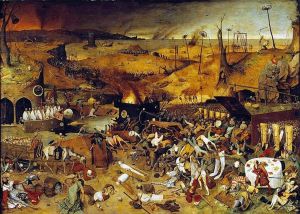 The sixteenth century was marked by a series of consecutive catastrophic events and in the words of Girolamo Rossi: « The prosperous progress of the town of San Remo came at the beginning of the sixteenth century interrupted by great calamities. - In 1502 the plague broke out there, and in a few
The sixteenth century was marked by a series of consecutive catastrophic events and in the words of Girolamo Rossi: « The prosperous progress of the town of San Remo came at the beginning of the sixteenth century interrupted by great calamities. - In 1502 the plague broke out there, and in a few 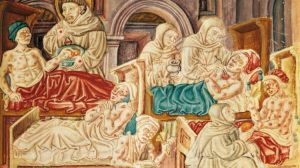 days every place was filled with the sick and the dead. - The shortage of food, the lack of hygienic measures and the flight of
days every place was filled with the sick and the dead. - The shortage of food, the lack of hygienic measures and the flight of  the wealthy contributed to increase the death. -The hospital, where no one wanted to rush, became the
the wealthy contributed to increase the death. -The hospital, where no one wanted to rush, became the  refuge of the plague victims, but for the large number of people who came, and the very few who waited to be treated, it was rare that those who entered, did not come out but to be taken to the tomb; and not only the hospitalized did not heal, but the healthy fell ill, and all lost their lives. ».
refuge of the plague victims, but for the large number of people who came, and the very few who waited to be treated, it was rare that those who entered, did not come out but to be taken to the tomb; and not only the hospitalized did not heal, but the healthy fell ill, and all lost their lives. ». 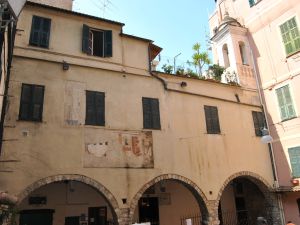 The Town Council sent a doctor from Genoa at its own expense. Armed guards were on the doors to check who entered and who left, that they were not infected. Despite all the remedies, the disease did not diminish and, since the earthly care was not enough, the city authorities decided to turn to the Eternal Father and in 1508 they erected a chapel in the small square of the Pigna now called Dei Dolori, dedicated to Saint Sebastian,
The Town Council sent a doctor from Genoa at its own expense. Armed guards were on the doors to check who entered and who left, that they were not infected. Despite all the remedies, the disease did not diminish and, since the earthly care was not enough, the city authorities decided to turn to the Eternal Father and in 1508 they erected a chapel in the small square of the Pigna now called Dei Dolori, dedicated to Saint Sebastian, 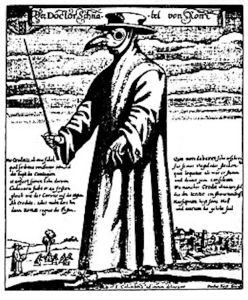 considered protector against the plague. The little square itself took the same name.
considered protector against the plague. The little square itself took the same name.
Throughout the century, however, the scourge continued to strike so much that in 1576-1579, during the most acute phase of the so-called plague of San Carlo Borromeo that invaded Italy, Manzoniana memoria was also hunted in San Remo. In 1581 the serious danger seemed to have been averted.
Il Rossi continues in his History of the City of San Remo: « To the plague, since evils should never be unsettled, another no less terrible calamity, the piracy of the Mohammedans. - The ferocious Ariadeno Barbarossa and Dragut, who, cheerful and insolent, used to run wild to prey and set fire to the Ligurian shores ». 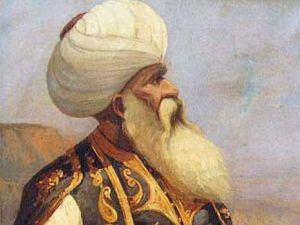
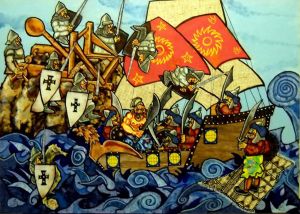 In fact the 16th century was marked by the ferocious and destructive raids, destruction and kidnappings that the Barbary pirates, at least until the battle of Lepanto in 1571, were the rulers of the Mediterranean. In spite of the defeat, however, the pirates, especially those based in Algeria and Tunisia, followed the "Holy War" declared by the Ottoman Emperor who, after the conquest of Constantinople in 1453, led to guerrilla and terrorist actions conducted by predatory fleets, towards all the coasts of the Mediterranean.
In fact the 16th century was marked by the ferocious and destructive raids, destruction and kidnappings that the Barbary pirates, at least until the battle of Lepanto in 1571, were the rulers of the Mediterranean. In spite of the defeat, however, the pirates, especially those based in Algeria and Tunisia, followed the "Holy War" declared by the Ottoman Emperor who, after the conquest of Constantinople in 1453, led to guerrilla and terrorist actions conducted by predatory fleets, towards all the coasts of the Mediterranean.
The first raid in 1508, of which there are documents, organised by a fleet leaving from Bizerte commanded by the Turkish pirate Kurtogali, took place in Diano, with plundering and kidnapping of women then redeemed with large sums of money.
The same fleet, brought to the coast of Lazio for the usual raids, aroused the interest of the Pope who asked Genoa to arm galleys to defend the coast. 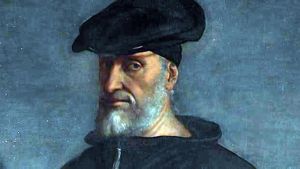 A very famous personage was appointed to their command, Andrea Doria, who was currently Captain of the fleet in Genoa but soon became Admiral. He chased the Turks and won them and even obtained from the Bey of Tunis a hypothetical promise not to promote any more scorpions on the coasts of Liguria. From 1518 the terror of the seas became the governor of Algiers, Kair-ed-Din, known as Barbarossa. Andrea Doria, in command of the papal fleet, defeated him off the coast of Civitavecchia (1526); two years later the admiral passed into the service of Emperor Charles V of Hapsburg, taking the position of Captain General of the Spanish armies.
A very famous personage was appointed to their command, Andrea Doria, who was currently Captain of the fleet in Genoa but soon became Admiral. He chased the Turks and won them and even obtained from the Bey of Tunis a hypothetical promise not to promote any more scorpions on the coasts of Liguria. From 1518 the terror of the seas became the governor of Algiers, Kair-ed-Din, known as Barbarossa. Andrea Doria, in command of the papal fleet, defeated him off the coast of Civitavecchia (1526); two years later the admiral passed into the service of Emperor Charles V of Hapsburg, taking the position of Captain General of the Spanish armies.
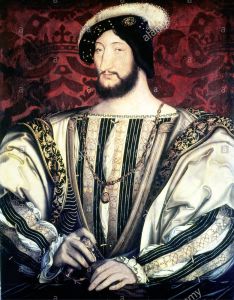 And at this point politics intervened. Because of the war between Francis the French and Charles the Fifth for dominance over the European countries, everyone looked for the most suitable ally.
And at this point politics intervened. Because of the war between Francis the French and Charles the Fifth for dominance over the European countries, everyone looked for the most suitable ally.  The interests intertwined between the various Kingdoms and Ducati led to alliances even against nature, since Francis I did it with the Turks to open a second front in the Mediterranean and engage the imperial army, since things in the Continent were not going too well for him.
The interests intertwined between the various Kingdoms and Ducati led to alliances even against nature, since Francis I did it with the Turks to open a second front in the Mediterranean and engage the imperial army, since things in the Continent were not going too well for him.
In the meantime, Barbarossa was appointed admiral of the Turkish empire and later bey of Tunis; and in the years 1536 and 1537, having more than one hundred ships, also armed by the Allies, he set sail again on the Ligurian coasts, plundering them.
In a moment of stalemate of the various wars sustained and after a temporary truce, during 1537 Charles V engaged himself in the affairs of state of Spain, studying, at the same time, a strategy that would allow him to honorably close the conflict with France so that he could also dedicate himself to solving the problems created by the Lutherans in Germany and by the Turks on the eastern borders of the Empire.
In the spring of 1537, however, France broke down and launched a new violent offensive in the Netherlands. Bloody battles were fought for both sides, which led the French and the emperors to conclude an armistice at Bomy in June 1537, following which Pope Paul III advanced his mediation which 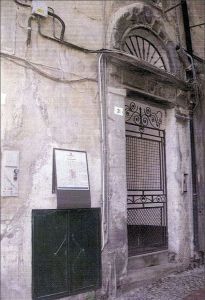 led to the Nice Convention in June 1538.
led to the Nice Convention in June 1538.
And it was during his journey to Nice that the Pope made a stop in Sanremo, staying in the house of the Manara, noble family of the Pigna. During the Convention of 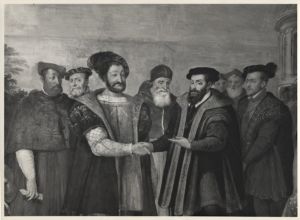 Nice a ten-year truce was agreed with the recognition of the "statu quo". Thus the third conflict between France and the Empire ended with nothing.
Nice a ten-year truce was agreed with the recognition of the "statu quo". Thus the third conflict between France and the Empire ended with nothing.
In 1539 the Ligurian coasts were still subjected to raids by another ferocious corsair, the pirate Dragut. He had already been captured by the Genoese in 1540 but, behind a symbolic sum, he was mysteriously freed by Andrea Doria himself.
The hostilities between France and the Empire resumed, a joint Franco-Turkish fleet laid siege to the city of Nice on 10th August 1543.
At that time the Genoese Luca Spinola, a strong man of character, son of the doge Battista (he too was doge in the two-year period 1551-1552), was podestà in charge of San Remo.
The presence of the imposing Turkish fleet, anchored in the Toulon roadstead in July 1543, which, as said, could count on 150 ships and more than 14,000 armed men, had caused great alarm throughout the western part of Liguria in San Remo in particular.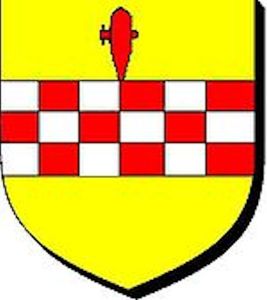 The Spinola, together with its emissaries, prudently kept a constant eye on the movements of the fleet and kept the Genoa government up to date. The city walls, which were considered too vulnerable, were reinforced and so were the gates, which in many parts did not have safety requirements for several years.
The Spinola, together with its emissaries, prudently kept a constant eye on the movements of the fleet and kept the Genoa government up to date. The city walls, which were considered too vulnerable, were reinforced and so were the gates, which in many parts did not have safety requirements for several years.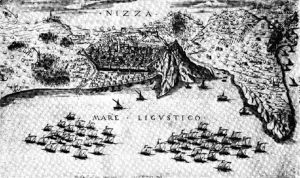 The Turkish fleet, having left its base, together with the French fleet of Marseille, reached Nice on 5 August. On the 6th there was a last attempt at negotiation, demanding the surrender of the Nice fleet, which they naturally refused.
The Turkish fleet, having left its base, together with the French fleet of Marseille, reached Nice on 5 August. On the 6th there was a last attempt at negotiation, demanding the surrender of the Nice fleet, which they naturally refused.
During the preparations for the Axis, and while the city was preparing for a strenuous defence, during the night between the 6th and 7th of August, not wanting to deny their pirate vocation, nine Algerian galleys with the reinforcement of other 6 ships in the morning, landed about a thousand armed men on the beaches of San Remo attacking the city which, however, was prepared for defence and probably strong with an equal number of valid and armed men.
Various sources report that the clash was very hard and engaged for eight hours the contenders, who were dead and wounded on both sides. The Algerians were unable to be right about the city, so they pretended to abandon it. Instead they landed on the east beach and headed for the valley of Verezzo, perhaps to bring a new attack behind them. During the move they plundered the countryside and kidnapped some women and their children, who could no longer be redeemed. The people of Sanremo, led by Luca Spinola, waited for the pirates in the Poggio Radino area and, after another violent clash at the Parà, near Verezzo, forced them to escape. The city was safe.
The episode obviously aroused an enormous impression and it is probable that some detail reported by tradition is inexact or the result of exaggeration; the clash however happened with certainty and the people of Sanremo were the winners. 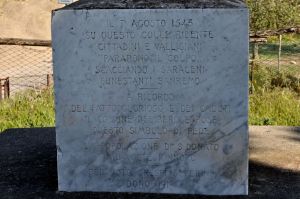 Various documents attest to the truthfulness of the event.
Various documents attest to the truthfulness of the event.
1 - Nilo Calvini traced the official letter with which the Podesta Luca Spinola reported the event to the Genoa Government in the Genoa State Archives:
« Ill.mo Signor Duce and magnificent Lords Governors,
In order to give everything to Your Lordships, I say that last night, at 5 o'clock, 9 galeote happened here at 5 o'clock, who approached the beach and calorno people on land, and at dawn another 6 happened, who medemamente calorno people and I hold very great asalto for two times to which, with the help of Our Lord, we have given a good answer by fighting for 8 hours. They have embarked, and for that I can guide them, they have taken a lot of done and puti for these vile ones. It was not possible to do anything else being here, because I am out. Let us pray that your illustrious Lordships may be content to send some of them, that is to say, of dust, crossbow seamstresses and arquebus rope and lead, so that you may, after your fury, pay for everything, not before. To your Lordships Ill.me how much I can command me, and priego mi dièno posanza da puoter commandando l'ordar le ville vicine ne dièno soccorso e aiuto bisognando; e così comandar qui, sotto gravi pene, perché sono puòcco ubbidienti.
Our Lord God grant your Lordships long happiness and give us victory.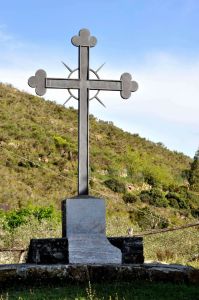 From San Remo to li VII in August to hore 15 of the XLIII. Luca Spinola ».
From San Remo to li VII in August to hore 15 of the XLIII. Luca Spinola ».
2 - In his Storia delle Alpi Marittime (History of the Maritime Alps), Pietro Gioffredo reports: « A team of seventeen Turkish galleys, brought to the beach of San Remo, on the Genoa Riviera, put people on land with the intention of taking and plundering that very pleasant place; but being bravely opposed to them, the San Remaschi forced them to reembark, with the deaths of some of them, after having made some prey in the countryside ».
3 - In the Borea Manuscript the following news is reported: « The Corsair Barbarossa pushed a part of his armies in this year in the nearby Riviera of Liguria to surprise and plunder some important lands. The Turks tried to disembark in San Remo, but Luca Spinola Podestà of the land with skilled villagers at arms rushed to the place of disembarkation. The defence was so vigorous that the Turks, full of wounds and blood, retreated ».
4 - Giuseppe Ferrari, according to Giacomo Siccardi's indications and news, points out that the locality of the Parà was so called already at the beginning of the 16th century, and therefore the meaning attributed to the place-name of 'parade', i.e. the stop of the barbarian invasion and of battle, seems doubtful.
5 - The same author reports the text of a resolution of 7th August 1607 which recalls the episode and decides to consider it a festive event:
« ....on the day of St. Donatus many pirate ships came here from the Turkish army to rob this place, and make prey of this people as with divine help, and the intercession of blessed St. Donatus, victory was won against these pirates. What day for the Adietro is almost sanctified and a procession is made so far of thanksgiving to so much help and it is rumoured that this day was taken with a vow to celebrate and sanctify it ».
6 - The Borea Manuscript confirms: « ... and a victory was won against de Turchi, and for this reason it was decreed by devotion that the procession to the convent of Padri Zoccolanti should take place, and this victory followed the day of St. Donato (20th April) ».
The confusion between the dates probably depends on the fact that in order to solemnly celebrate the event it was decided to build the church of Verezzo, dedicated to San Donato and completed in 1630; it remains to be noted that the tradition of the battle of the Parà is not confirmed by the letter of Luca Spinola, who speaks only of « asalto grandissimo per doe volte » to the city and of raids « per queste vile ». Beyond the details, which for lack of documents it is not possible to go into, the certain fact remains that the men of San Remo, led by Luca Spinola, managed to defeat the Algerian corsairs.
But it was not yet over: the same corsairs who had been forced to abandon their intentions hastily, promised to return for revenge.
Luca Spinola, taking them at their word and fearing their return, had urged them to set up new defences, but above all the help of the nearby cities which, however, did not want to know. For the moment, the Turks, who were still engaged in the siege, did not show up, but Luca Spinola pushed for a preventive action of defence against foreseeable Turkish attacks, as he needed to « fortify himself in order to be able to break their heads, as God willing, we have in mind to do ».
After a strenuous and heroic defence, Nice was conquered on 5th September 1543 and immediately the raids began again, hitting the villages of Bordighera, Ospedaletti, Seborga 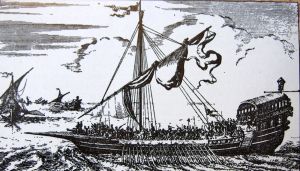
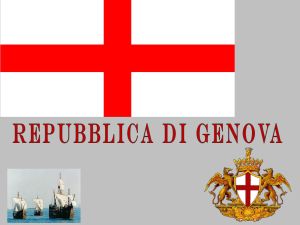 and Coldirodi.
and Coldirodi.
While the Turkish fleet stopped for the winter in Toulon, their allied, Algerian and Tunisian ships took the Corsican way and took away the prisoners of Sanremo, preventing their ransom.
In 1544, in place of the Spinola, whose mandate had expired, Sebastiano Artusio was appointed podestà, who immediately organised surveillance at sea, requested new weapons in Genoa and controlled the movements of the Turkish fleet. At the news of his imminent transfer, the Republic of Genoa ordered « to everyone who does not offend the aforesaid army, when the aforesaid army does not offend us beforehand; on the contrary, when in which place the aforesaid army will be fused by the aforesaid army and asked for some refreshments, in those ways that are safe and convenient, they should be given... ». In simple terms, the Rebubblica wanted to avoid preventive actions, as urged by Spinola, and to respond only if provoked, or rather, if they received requests for supplies or others, to give them to avoid trouble.
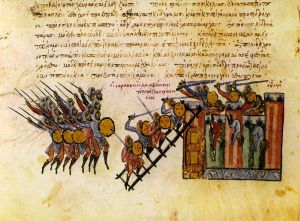 In fact, at the end of May, during its journey to Genoa, the Turkish fleet promptly made it known that it wanted to refuel in San Remo; and despite the
In fact, at the end of May, during its journey to Genoa, the Turkish fleet promptly made it known that it wanted to refuel in San Remo; and despite the 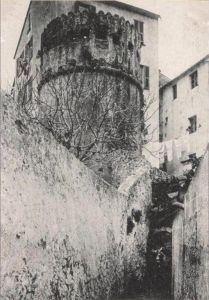 agreement that no more than ten Turks would landed, while the load of « victuals and rich presents » was being carried out, a large group of armed men disembarked, trying to assault the city. The surrounding walls resisted and were unable to enter so, frustrated in their intent, they set about plundering what they found at hand, including the Church of San Siro, destroying all that was possible but without any of the Church's precious furnishings, which had been saved beforehand. Then they poured their anger on the villages of Borghetto and Ceriale, obtaining more than 200 prisoners.
agreement that no more than ten Turks would landed, while the load of « victuals and rich presents » was being carried out, a large group of armed men disembarked, trying to assault the city. The surrounding walls resisted and were unable to enter so, frustrated in their intent, they set about plundering what they found at hand, including the Church of San Siro, destroying all that was possible but without any of the Church's precious furnishings, which had been saved beforehand. Then they poured their anger on the villages of Borghetto and Ceriale, obtaining more than 200 prisoners.
But the danger of the barbarians was unfortunately not over. In 1546 the pirate Dragut attacked Laigueglia, San Lorenzo and Santo Stefano, destroying them and taking almost all the population prisoner. From San Remo he urged the extension of the walls to the San Siro district, where 800 unprotected people lived.
In 1547 Luca Spinola returned as podestà and became very popular. He reorganised the defences, but it was only in 1550 that it was decided to spend the due amount to defend the city against Dragut, which was reported several times in our waters. The gates of the village were reduced from fifteen to four, closed at night and constantly watched over; the inhabitants of the Piano built their own defences, while the walls of the Pigna were completed up to the new bastion of the Ciapella.
In 1552 San Remo had 560 men suitable for arms: 400 arquebusiers, 40 crossbowmen, 120 armed with rods, swords, spears. The neighbouring villages also had well-equipped garrisons.
Despite the existence of this defensive organisation, between the 25th and 26th June 1555 Turkish and Algerian pirates landed in Ospedaletti and captured many inhabitants of the 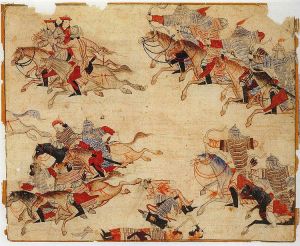 Colla.
Colla.
Then, with incredible brazenness, they stopped in the area of the oratory of San Rocco, west of the present fortress of Santa Tecla, dealing with the ransom of the kidnapped. Money was collected and negotiations continued for a month in Antibo, where the pirates had their base.
In the end only three wretches remained in their hands, who ended up as slaves. After this episode, a defence bastion was also built in Coldirodi.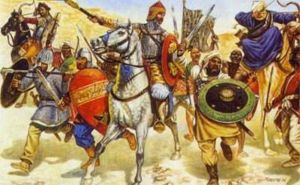 In the following years the raids were led by another pirate chief, Ulugh-Alì of Algiers called Occhialì, who devastated the coastal resorts of the far west. In 1562 San Remo had completed its walls, which also included the district of the Palma superiore.
In the following years the raids were led by another pirate chief, Ulugh-Alì of Algiers called Occhialì, who devastated the coastal resorts of the far west. In 1562 San Remo had completed its walls, which also included the district of the Palma superiore.
A watchtower was built in Poggio, while the previous year the only existing bombardment in the city had forced the pirates to flee, who had limited the landing in San Martino, with little consequences.
Together with the strengthening of the walls, other fire mouths were placed. Ulugh-Alì, however, did not cease its terrorist actions.
On 9th June 1564 it landed with many men at the cave of the Arma di Bussana (the tower that dominates the promontory will be completed only in 1565) and attacked the convent of the Dominicans of Taggia, but was not able to overcome the resistance of the inhabitants closed inside the walls, after seven hours of battle.
Numerous attacks were repeated against the coastal villages of the Riviera, saving San Remo, because it was now well defended and equipped with long-range artillery.  After the defeat of the Turkish and Ottoman fleets at Lepanto (1571) the defensive system of coastal sighting in western Liguria was completed; Ulugh-Alì, who survived the battle, then preferred to attack the southern coasts and the islands, even if in 1594 the inhabitants of the Colla suffered another assault. Seventy were kidnapped, and the ransom paid of 8000 lire managed to bring them back to freedom. After this umpteenth episode it was decided the construction of a square tower (completed in 1597) and above all the Council of the Community of San Remo deliberated the appointment of a Magistrate for the redemption of the slaves.
After the defeat of the Turkish and Ottoman fleets at Lepanto (1571) the defensive system of coastal sighting in western Liguria was completed; Ulugh-Alì, who survived the battle, then preferred to attack the southern coasts and the islands, even if in 1594 the inhabitants of the Colla suffered another assault. Seventy were kidnapped, and the ransom paid of 8000 lire managed to bring them back to freedom. After this umpteenth episode it was decided the construction of a square tower (completed in 1597) and above all the Council of the Community of San Remo deliberated the appointment of a Magistrate for the redemption of the slaves.
By the end of the 1600s 29,000 lire had been paid in ransoms; but in 1646 five more San Remo were ransomed for a total of 190 scudi, a clear sign that the scourge of piracy was far from extinct.
(Sources: from the book "Sanremo, heart and soul of a City" op.cit.; images from private archives and from the Web)




